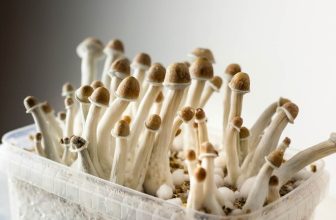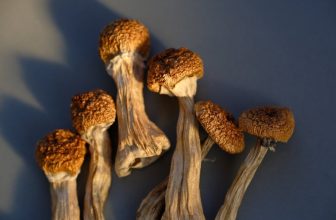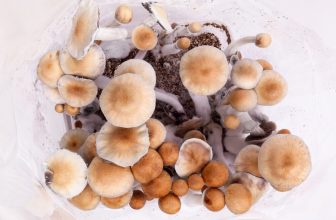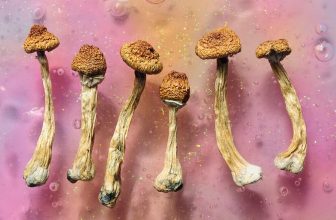
Key Takeaways
- Salvia divinorum, a psychoactive plant native to Oaxaca, Mexico, is known for the potent hallucinogen Salvinorin A, which significantly differs in structure and effect from other psychoactive substances.
- The plant’s psychoactive experiences can induce intense hallucinations and alter mental states, potentially leading to psychiatric conditions, with various consumption methods affecting the duration and intensity of its effects.
- Salvia divinorum’s legal status varies internationally, with some countries enacting complete bans while others regulate its sale and use; despite concerns, there is ongoing research into its therapeutic potentials, including analgesic and anti-inflammatory properties.
Understanding Salvia Divinorum
Salvia divinorum, often known as hallucinogenic sage salvia divinorum, ska maría pastora, seer’s sage, or magic mint, exemplifies the incredible variety of nature’s offerings. This perennial shrub-like herb, an angiosperm, belongs to the asterids order Lamiales, showcasing its botanical lineage. Mazatec shamans have used Salvia divinorum, renowned for its psychoactive properties, for divination and healing, which solidified its esteemed status in their culture.
Native to the Sierra Mazateca region of Oaxaca, Mexico, Salvia divinorum thrives in a specific microclimate – humid, shaded areas within cloud forests. The plant’s growth habits and propagation methods, combined with its cultural significance, have ensured its survival and propagation in these remote regions.
Salvinorin A, the active ingredient and a potent naturally occurring hallucinogen, is responsible for the unique psychoactive properties of Salvia divinorum. This plant derived hallucinogen salvinorin is a structurally unique diterpenoid, unlike other psychoactive compounds that contain a nitrogen atom, and is not classified as an alkaloid.

Defining the Plant
Salvia divinorum is a botanical marvel. As a perennial shrub-like herb, it typically grows between 0.5 to 1.5 metres in height, featuring:
- Hollow square stems characteristic of the mint family
- Velvety or hairy, elliptical-shaped fresh salvia leaves with arcuate venation
- Leaves positioned in opposite pairs along the stem, creating a lush, green canopy.
Blooming Salvia divinorum embellishes the plant with white flowers featuring a white corolla and a violet calyx. However, the plant does not commonly produce seeds, and its propagation is typically achieved through cuttings. This method of propagation, along with its distinct growth habits, contributes to the plant’s survival and proliferation in its native environment.
The Hallucinogenic Component
Salvinorin A, a unique compound, is responsible for the psychoactive effects of Salvia divinorum, distinguishing it from other hallucinogens. Salvinorin A is a potent κ-opioid agonist, responsible for the plant’s hallucinogenic effects. Unlike classical hallucinogens, such as LSD, which act on the 5-HT2A serotonin receptor, salvinorin A does not interact with this receptor, distinguishing its mode of action from typical psychedelic substances.
In fact, salvinorin A is recognized as the most potent naturally occurring hallucinogen by mass, with psychoactive doses starting as low as 200 µg. The potency of this compound leads to effects that can be quite intense, such as incapacitation and vivid hallucinations, making Salvia divinorum a potent and unique entity in the world of psychoactive substances.
The Psychoactive Experience

Experiencing the psychoactive effects of Salvia divinorum leads to a world of intense, fleeting hallucinations. The effects of salvinorin A can begin within just one minute after inhalation, peaking swiftly before subsiding typically by the 15-minute mark. This rapid onset and resolution make the Salvia divinorum experience quite unique among psychedelic substances.
Intriguingly, the psychoactive state triggered by salvinorin A is more incapacitating than that induced by other classical psychedelics. Users often report experiencing dense amnesia and near-death experiences similar to those induced by substances like ketamine. These intense effects, both mentally and physically, can be disorienting and overwhelming, particularly for inexperienced users.
Although the psychoactive experience of Salvia divinorum is fascinating, one must not overlook its potential implications on mental health. Repeated use of Salvia divinorum can be associated with serious psychiatric conditions in young or vulnerable individuals, including cases of persistent psychosis and behavioral disorders. This raises concerns about the potential mental health risks associated with the plant’s use, particularly for recreational purposes.
Diverse Methods of Consumption
Salvia divinorum can be consumed in a variety of ways, each with its own unique effects. Smoking crushed dried leaves from a pipe or water bong induces hallucinations within a minute, lasting for 15-20 minutes with typical dosages of 0.25-0.75 grams of leaf material. This method of consumption is popular among recreational users due to its quick onset and relatively short duration.
On the other hand, chewing Salvia divinorum leaves as a quid produces effects that are longer-lasting, with mild to medium effects from dosages of 10-30 grams of fresh leaves or 2-5 grams of dried leaves. Aqueous ethanol tinctures made from Salvia divinorum leaves, when used sublingually, have an onset of 5-10 minutes. The effects can last up to 2 hours. However, drinking tea made by steeping Salvia divinorum leaves is generally ineffective as a method of consumption due to degradation of salvinorin A in the gastrointestinal tract.
This diversity in methods of consumption offers users a range of experiences, from quick, intense trips to prolonged, milder effects.
Potential Effects on Mental Health
While some may find the psychoactive effects of Salvia divinorum intriguing, potential risks and psychiatric consequences of its use warrant consideration. Salvia intoxication can lead to:
- severe dissociation, where individuals may experience a loss of pain sensation, severe anxiety, paranoia, and hallucinations
- self-harm
- cardiovascular risks, particularly during high-intensity experiences
These intense effects can result in self-harm and pose cardiovascular risks, particularly during high-intensity experiences.
Moreover, Salvia divinorum users show higher odds of experiencing depression and drug addiction compared to nonusers, with a significant proportion of users displaying illicit or nonmedical drug-use disorders. The plant’s active component, salvinorin A, interacts with the kappa opioid receptor (KOPr) system, which is involved in mood, stress, and addiction, and studies suggest its use can lead to structural brain changes and cytotoxic effects.
These potential risks emphasize the need for responsible use and continued exploration of the plant’s impact on mental health.
Legal Status and Drug Abuse
The legal status of Salvia divinorum varies globally, reflecting the complex and often contentious nature of psychoactive substance regulation. In some countries, the plant is legal for consumption, while in others, such as:
- Australia
- Belgium
- Brazil
- Canada
- Denmark
controls have been enacted. This patchwork of legislation reflects the wide spectrum of attitudes towards the plant, from acceptance to prohibition.
In the United Kingdom, for example, the Psychoactive Substances Act 2016 outlaws supplying, producing, and possessing Salvia divinorum with intent for human consumption. Meanwhile, in the United States, the plant’s legal status varies by state, creating a complex regulatory landscape that ranges from Schedule I substance classifications to decriminalization or age restrictions.
The diverse legislative approaches to Salvia divinorum are influenced by various factors, including:
- misunderstandings about the plant’s effects, often inaccurately compared to LSD
- the nondescript characteristics of the plant, resembling an ordinary houseplant, which presents challenges for enforcement of cultivation bans
- public dialogue, with advocates arguing for research and measured approaches to Salvia divinorum regulation, instead of outright bans.
Selling Salvia: A Regulatory Overview

The sale and cultivation of Salvia divinorum are subject to a diverse array of regulations across different countries and states. In Spain, for instance, regulations focus on prohibiting commercial trade, while private cultivation for personal use remains unregulated. In contrast, Belgium has made the entire Salvia divinorum plant illegal, reflecting its stringent stance.
In Japan, the law prohibits the sale, transportation, and consumption of Salvia Divinorum materials for immediate use, while allowing the cultivation and sale of living plants for ornamental purposes. The United States presents a complex regulatory landscape, with legal status varying by state, from Schedule I substance classifications to decriminalization or age restrictions.
Some states have taken a more nuanced approach. For instance, Maine imposes age restrictions on the sale and use of Salvia divinorum, treating it similarly to tobacco and alcohol in terms of access by minors. On the other hand, Tennessee outlaws Salvia divinorum for ingestion but permits its use for decorative purposes, showcasing the diverse range of regulatory responses to this unique plant.
Salvia Divinorum Drug Profile
The drug profile of Salvia divinorum includes:
- The plant’s distinctive reproductive habits, rarely producing viable seeds and reproducing vegetatively
- Speculation about its botanical classification and contribution to its growth and proliferation
- The identification of its active component, salvinorin A, which can be achieved through significant fragments in mass spectrometry and characteristic absorption bands
- Analyses using technologies such as gas chromatography or high-performance liquid chromatography to detect salvinorin A
The hallucinogenic herb salvia divinorum has also gained notable popularity among recent drug users, including those who have used illegal drugs and other psychoactive drugs such as:
- LSD
- ecstasy
- heroin
- phencyclidine
- cocaine
The neurobiological and behavioral effects of the plant, such as stress or substance-induced disturbances, have been attributed to the upregulation of kappa opioid receptor (KOPr)/dynorphin activity, which is affected by Salvia divinorum use. This unique drug profile offers a fascinating insight into the plant’s effects and its place in the world of psychoactive substances.
Medical Research and Therapeutic Potentials

Beyond its recreational use, Salvia divinorum, a kappa opioid agonist hallucinogen, and its active component, salvinorin A, have shown potential for medical applications. Salvinorin A uniquely activates the κ-opioid receptor (KOR), differing from classic hallucinogens that affect serotonin receptors. The non-nitrogenous neoclerodane structure of Salvinorin A presents a novel framework for drug discovery in treating neuropsychiatric disorders, demonstrated by its sedative-like effects and influence on locomotor activity in rodent models.
Current research efforts are focused on developing Salvinorin A analogs with the aim of achieving therapeutic effects on the kappa opioid receptors while minimizing undesirable symptoms such as aversion and anhedonia. The potential therapeutic benefits of salvinorin A have cultural roots in the Mazatec tradition as a spiritual practice, highlighting the plant’s historical significance.
Even though Salvia divinorum’s potential therapeutic applications are promising, a responsible approach to salvia use remains paramount. As with any psychoactive substance, potential risks and side effects should be carefully weighed against potential benefits.
Analgesia and Anti-Inflammatory Properties
Research into the analgesic and anti-inflammatory effects of salvinorin A has revealed promising potentials. Some of the potential effects of salvinorin A include:
- Inducing an antinociceptive effect in thermal and chemo-nociceptive assays, indicative of its analgesic potential
- Acting as a kappa-opioid receptor (KOPr) agonist, leading to antinociception in mice
- Having a reduced tendency to cause typical opioid side effects
These findings suggest that salvinorin A could be a valuable compound for further research and development in the field of chronic pain management.
These findings suggest potential applications in the relief of chronic and neuropathic pain. Preclinical models are exploring novel salvinorin A-based compounds for their analgesic properties in neuropsychiatric states, including pain. Additionally, salvinorin A has shown anti-inflammatory activity in models of colitis and reduces leukotriene biosynthesis in vitro, suggesting potential therapeutic applications for leukotriene-related inflammatory diseases.
Risks and Relative Toxicity
The potential therapeutic applications of Salvia divinorum and salvinorin A are promising, but it’s necessary to factor in potential risks and relative toxicity associated with their use. Rodents exposed to high levels of Salvia Divinorum and salvinorin A show no signs of organ damage, indicating a relatively low toxicity. However, adverse effects such as:
- damage to the lungs
- damage to the stomach lining
- damage to the liver
- damage to the kidneys
can occur depending on the method of ingestion of salvia.
Furthermore, there are concerns over cytotoxicity with the prolonged use of Salvia Divinorum. Therefore, while research continues to explore the potential benefits of Salvia divinorum and salvinorin A, it is important to approach its use responsibly, considering both the potential benefits and risks.
Cultural and Historical Context

Salvia divinorum boasts a rich cultural and historical narrative, deeply embedded in the culture of the Mazatec Indians of Mexico. Considered a sacred plant, Salvia divinorum is believed to have been primarily cultivated by the Mazatec, who carefully bred or hybridized the plant to maintain its potent psychoactive properties. The plant is native to the Mazatec region of Mexico, where it was traditionally used for divinatory and spiritual healing purposes.
The term ‘divinorum’ in Salvia divinorum means ‘of the seer,’ further emphasizing its historical use in divination practices among the Mazatecs. During traditional ceremonies, Mazatec shamans would use Salvia divinorum in the following ways:
- Roll fresh leaves into a quid
- Crush the leaves for an infusion
- Perform ritualistic preparation that included fasting and sexual abstinence
- Drink a potion made from the crushed leaves
These practices could induce muscular sensations, chills, amplified sounds, and vivid visual hallucinations, serving as a tool for shamans to induce visions and perform divination.
However, modern times have ushered in a shift in the use of Salvia divinorum. Transitioning from its traditional role in divination and spiritual healing, Salvia divinorum has emerged in the modern world as a recreational drug, mainly consumed by smoking extracts. This cultural shift in the perception and use of Salvia divinorum highlights the evolving relationship between humans and psychoactive substances.
The Plant’s Origins and Spread
Salvia divinorum’s origins trace back to the Sierra Mazateca of Oaxaca, Mexico, where it flourishes in humid, shaded areas under the forest canopy. The plant’s survival in these remote regions is attributed to the Mazatec community, who have traditionally been protective over its use and cultivation, contributing to limited scientific research and broader understanding outside of their region.
Despite its relatively isolated origins, Salvia divinorum has gained increasing popularity worldwide. Reports show that the lifetime prevalence of Salvia divinorum use increased among survey respondents from 0.7% in 2006 to 1.3% in 2008. This increase is a testament to the plant’s intriguing properties and the curiosity of modern users, reflecting a cultural shift from its traditional ceremonial use to modern recreational consumption.
Traditional Versus Modern Use
The traditional ceremonial use of Salvia divinorum by the Mazatec Indians and its modern recreational consumption stand in stark contrast. The Mazatec shamans would roll fresh leaves into a quid or crush them for an infusion during their ceremonies, inducing muscular sensations, chills, amplified sounds, and vivid visual hallucinations as part of an altered state of consciousness.
On the other hand, modern recreational consumption of Salvia divinorum mainly involves smoking extracts, a practice that significantly deviates from traditional methods and doesn’t carry the religious and spiritual connotations of Mazatec use. This transition from Salvia divinorum’s traditional role in divination and spiritual healing to its modern status as a recreational drug highlights the evolving relationship between humans and psychoactive substances, reflecting broader societal shifts in the perception and use of such plants.
Summary
In conclusion, Salvia divinorum is a remarkable plant with a rich cultural history and unique psychoactive properties. From its traditional use in divination and spiritual healing by the Mazatec Indians to its modern recreational consumption, the plant represents a fascinating intersection of botany, ethnography, and pharmacology. While the potential therapeutic applications of Salvia divinorum and its active component, salvinorin A, are promising, it is crucial to consider the potential risks and toxicity associated with its use. As research into this intriguing plant continues, it is important to approach its use responsibly, respecting its cultural significance and potential impacts on mental health.
Frequently Asked Questions
Are Red Salvias perennials?
Red Salvias are technically perennial plants, but they are often grown as annuals in temperate zones. So, while they can come back year after year, they are typically treated as annuals.
What is salvinorin A used for?
Salvinorin A is used as a recreational drug, giving rise to short-lived intense hallucinations, antinociception, sedation, and dysphoria. It is the major active component in Salvia divinorum, responsible for the plant’s hallucinogenic effects.
How potent is salvinorin A?
Salvinorin A is reported to be the most potent naturally occurring hallucinogen, with an effective dose in humans in the 200- to 1,000-g range when smoked.
Is salvinorin A natural product?
Yes, salvinorin A is a natural product derived from the sage plant, Salvia Divinorum, and is the most potent naturally occurring hallucinogen (Jun 10, 2015).
What is Salvia divinorum?
Salvia divinorum is a type of plant from the mint family, known for its psychoactive properties due to the presence of salvinorin A.






